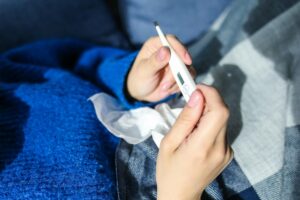The Oropouche Virus: A New Public Health Concern
Read DISCLAIMER
Learn about the Oropouche virus, its symptoms, prevention strategies, and recent outbreaks. Discover how this emerging disease is becoming a significant public health concern and the measures needed to protect against it.

Introduction
With the first recorded deaths of the Oropouche virus in Brazil, the virus has become a major public health worry in recent months, rising from relative obscurity. The unfortunate deaths of two young women in Bahia serve as a reminder of the serious consequences that could arise from this once-overlooked disease, which was first identified in the Caribbean in 1955. The virus, which is mostly spread by mosquito and small midge bites, is becoming a more urgent problem as its geographic range grows and its effects worsen.
The Oropouche virus, which has over 7,200 cases recorded in Brazil alone and is spreading throughout many nations, is a prime example of the new risks that neglected illnesses are posing in our fast evolving global community. As we tackle the ever-changing concerns of global health, it is imperative that we comprehend this illness, how it spreads, and how to prevent it.

What is the Oropouche Virus?
The Oropouche virus belongs to the Bunyaviridae family and the genus Orthobunyavirus. It was discovered for the first time in the Caribbean in 1955. It is mostly found in tropical areas and is spread to people by the bites of small, biting midges that are infected, particularly Culicoides paraensis. These little bloodsucking insects are called midges, and they are very common in some tropical and subtropical regions. Furthermore, Aedes mosquitoes have the potential to contribute to the virus’s spread.
The Oropouche virus is distinguished by its unique way of spreading. It is unknown if direct human-to-human contact may transfer the Oropouche virus, in contrast to many other viral illnesses that can move from person to person. This indicates that although casual contact between infected individuals and the virus cannot spread the infection, exposure to infected insects is still the main cause for worry.
Although the virus cannot move directly from person to person within a community, this fact emphasizes how crucial it is to manage vector populations in order to stop outbreaks. Because the virus can spread by both midges and mosquitoes, management techniques become more complex, requiring comprehensive tactics to manage these insect vectors and reduce the risk of infection.
In areas where these insects are common, the Oropouche virus’s emergence and dissemination highlight the necessity of close observation and preventative actions. The habitats of these vectors may grow as a result of climate change and ongoing environmental changes caused by humans, which could raise the possibility of Oropouche virus transmission.
read more posts

Clinical Manifestations
It might be difficult to diagnose Oropouche virus infection accurately since its symptoms can match those of other infections carried by mosquitoes. Here’s a thorough examination of the clinical signs linked to this viral disease:
– High Fever : The typical indication of an Oropouche virus infection is a sharp rise in body temperature that occurs suddenly. One of the first and most noticeable symptoms is frequently a high fever, which can linger for many days and add to general pain and exhaustion.
– Severe Muscle and Joint Pain : It is common for patients with Oropouche fever to have severe, all-over muscle and joint pain. The intensity of myalgia and arthralgia can interfere with daily activities and movement, making it difficult for people to carry out daily responsibilities.
– Headaches : Severe headaches are a frequent and incapacitating sign of an Oropouche virus infection. The chronic nature of these headaches, together with accompanying pressure or throbbing sensations, can seriously lower the person’s quality of life.
– Nausea and Vomiting : Those infected with the Oropouche virus also frequently have gastrointestinal symptoms like nausea and vomiting. If left untreated, these symptoms can worsen dehydration, particularly when accompanied by a high fever, and result in additional problems.
– Chills and Sensitivity to Light : Patients may also have chills and photophobia, or an increased sensitivity to light, in addition to a fever. These signs and symptoms are typical of many viral infections and can add to general discomfort and a lethargic mood.
– Meningitis : In some cases, the Oropouche virus infection can progress to cause meningitis, which is a severe and potentially life-threatening condition. Meningitis involves inflammation of the protective membranes (meninges) covering the brain and spinal cord. This can lead to symptoms such as severe headache, neck stiffness, sensitivity to light, and altered mental status. Meningitis requires prompt medical attention to prevent serious complications.
Overall, there can be a wide range in the clinical presentation of Oropouche virus infection; some people may only show moderate symptoms, while others may experience more severe problems. When diagnosing and treating Oropouche fever, medical professionals must take into account the complete clinical picture as well as any possible exposure history due to the symptoms’ overlap with other mosquito-borne illnesses.
read more posts

Rising Cases and Geographic Spread
Brazil has recorded more than 7,200 Oropouche virus cases as of 2024. The Pan American Health Organization (PAHO) reports that there have been over 7,700 confirmed cases of the virus in five different countries: Brazil, Bolivia, Peru, Cuba, and Colombia. A major worry is the virus’s spreading geographic range, which could be made worse by climate change. Increased temperatures and changed precipitation patterns could be causing midges and mosquitoes to move their habitats, which would help the Oropouche virus and related infections proliferate.
According to a recent analysis published in The Lancet, the Oropouche virus is a “prototypical neglected disease,” meaning that it has the potential to become a serious hazard to public health. The assessment issues a warning against underestimating the virus’s potential to proliferate and result in grave health issues.
read more posts

Prevention Strategies
There are currently no antiviral medications or vaccinations specifically designed to combat the Oropouche virus. Therefore, limiting exposure to the insect vectors that carry the virus is essential for effective prophylaxis. Below is a thorough summary of the suggested preventive actions:
– Protective Clothing : The amount of exposed skin can be greatly decreased by wearing long sleeves, long pants, and socks, which will lessen the chance of getting bitten by insects. Invest in garments with tightly woven textiles to keep midges and mosquitoes at bay. Wearing such protective clothes during the day is advised in places where these insects are common because midges might be active throughout the day.
– Insect Repellents : Insect repellents are an essential tool for avoiding mosquito and midge bites. DEET (N,N-Diethyl-meta-toluamide)-containing repellents work incredibly well to keep these insects away. As directed by the product, apply the repellent to all exposed skin and reapply it as needed, particularly if you are perspiring or have just gone swimming. Use clothing and equipment sprayed with repellant for enhanced protection.
– Mosquito Nets : Sleeping beneath fine-mesh mosquito nets is a crucial precaution, particularly in areas where Oropouche virus vectors are known to be present. While you sleep, nets with tiny mesh apertures help keep insects from touching your skin. To avoid any openings where insects could enter, make sure the nets are securely fastened or tucked up. Nets sprayed with insecticides can provide extra security by eliminating or discouraging insects that come into contact with the net.
– Environmental Management : A key component of efficient environmental management is minimizing the areas where midges and mosquitoes breed. It is essential to manage or remove sources of stagnant water near homes and communities because this insect lays its eggs in standing water. This can include:
– Regularly Emptying Containers : Dispose of or empty containers that collect rainwater, such as buckets, flower pots, and old tires.
– Maintaining Proper Drainage : Ensure that drainage systems are functioning well and free of blockages that could lead to water accumulation.
– Using Larvicides : In areas with persistent water bodies, larvicides can be applied to kill mosquito larvae before they mature into adult insects.
People can drastically lower their chance of getting Oropouche virus and other related vector-borne illnesses by taking these preventive steps. In addition, community-wide programs to control vector populations and inform locals about practical preventive measures should be part of public health activities.
read more posts
Conclusion
For public health professionals, the rise in Oropouche virus-related deaths in Brazil is a serious wake-up call. Given that vector-borne diseases may be influenced by climate change, it is critical to improve surveillance, increase public awareness, and get ready for prospective outbreaks. Developing efficient preventive and response plans to protect communities from this new threat will depend on ongoing research into the virus and its effects on human health.
read more posts
FAQs
1. What is the Oropouche virus?
The Oropouche virus is an Orthobunyavirus transmitted primarily by small biting midges (Culicoides paraensis) and, to a lesser extent, mosquitoes (Aedes species). It causes symptoms similar to other mosquito-borne diseases.
2. When was the Oropouche virus first discovered?
The Oropouche virus was first discovered in the Caribbean in 1955.
3. How is the Oropouche virus transmitted?
The virus is transmitted through the bites of infected midges and mosquitoes. It is not spread from person to person.
4. What are the common symptoms of Oropouche virus infection?
Symptoms include high fever, severe muscle and joint pain, headaches, nausea and vomiting, chills, sensitivity to light, and in severe cases, meningitis.
5. Can the Oropouche virus be transmitted through human contact?
No, the Oropouche virus is not transmitted through direct human-to-human contact. It is spread through insect bites.
6. How many cases of Oropouche virus have been reported in Brazil?
As of 2024, Brazil has reported over 7,200 cases of Oropouche virus.
7. What preventive measures can be taken to avoid Oropouche virus infection?
Preventive measures include wearing protective clothing, using insect repellents with DEET, sleeping under mosquito nets, and managing environmental factors that contribute to mosquito and midge breeding.
8. Are there any vaccines available for the Oropouche virus?
No, there are currently no specific vaccines available for the Oropouche virus.
9. What is the recommended treatment for Oropouche virus infection?
There are no specific antiviral treatments for the virus. Management focuses on relieving symptoms, such as fever and pain, and addressing complications like dehydration.
10. What complications can arise from Oropouche virus infection?
Complications can include severe muscle and joint pain, gastrointestinal issues, and in severe cases, meningitis.
11. How can one protect themselves from insect bites?
Protect yourself by wearing long-sleeved clothing, using insect repellents, and sleeping under mosquito nets.
12. Where is the Oropouche virus most commonly found?
The virus is commonly found in tropical and subtropical regions, including countries like Brazil, Bolivia, Peru, Cuba, and Colombia.
13. What role does climate change play in the spread of the Oropouche virus?
Climate change can expand the habitats of mosquito and midge vectors, potentially increasing the risk of Oropouche virus transmission.
14. Is there a risk of Oropouche virus in urban areas?
While the virus is more common in rural and tropical areas, urban environments with suitable vector habitats can also be at risk.
15. What should one do if they suspect they have Oropouche virus infection?
Seek medical attention if you experience symptoms such as high fever, severe muscle pain, and headache, especially if you have been in areas where the virus is known to occur.

I don’t think the title of your article matches the content lol. Just kidding, mainly because I had some doubts after reading the article. https://accounts.binance.com/ph/register-person?ref=B4EPR6J0
Thank you for your sharing. I am worried that I lack creative ideas. It is your article that makes me full of hope. Thank you. But, I have a question, can you help me?